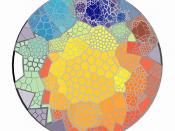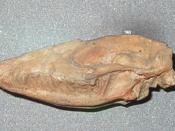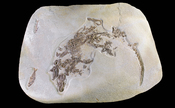Similarities of physiology and behaviour due to homology - share common ancestor with that trait or analogy - not due to common ancestor but common due to convergent evoution.
Improvement suggestions: the behavioural homology of crocodiles and birds may be flawed. Also the analogy between fish and mammals could be wrong as the post-anal tail of quadrupedal mammals and fish is a common trait.
Homology and Analogy Essay
Animal Form and Function
Homology and Analogy
Many species share similarities in their structural apperance and behaviour but this can be due to different reasons. A characteristic or behaviour is said to be homologous if it is shared by two or more species and was present in their common ancestor. Homologous features arise from adaptive radiation whereby many species derive from a single or few ancestor species to adapt to different environmental conditions and modes of life. By descent with modification species adapt to new environments by modifying existing charcteristics.
Homologous structures are often specialized in different organisms, for example the pentadactyl limbs of tetrapods contain the same basic structure but the bones have been adapted to each organisms way of life. This is demonstrated by the elongated digits of bats to support their wings, and the the grasping hand of a monkey adapted for climbing. Charateristics or behaviours that are similar in two or more species but not present in their common ancestor are said to be analogous. Analogous features arise through convergent evolution as they have developed separatley in unrelated taxonomic groups as a result of a similar way of life, for example the wings of birds and insects as they do not share a common ancestor with wings. The theory of evolution suggests we would expect a higher number of shared homolgies for closely related species, and decreasing number...


